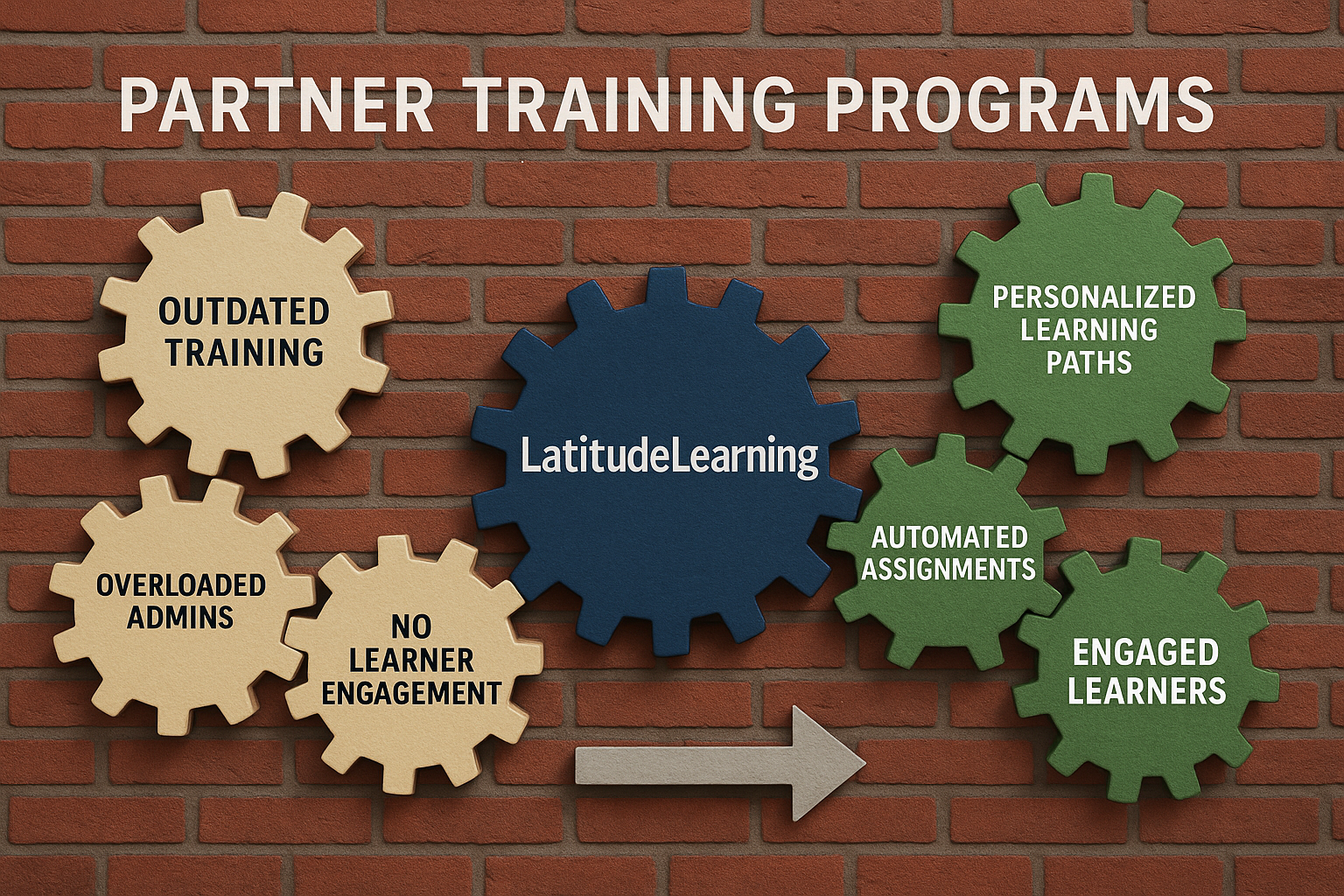
Partner training is a cornerstone of successful extended‑enterprise strategies, yet the stark reality is this: most partner programs underdeliver. Studies indicate that up to 70% of external learners disengage after their initial onboarding, leaving your partners—the very ambassadors of your brand—underprepared and unsupported. When partners stumble, your brand image weakens, sales opportunities slip away, and compliance risks escalate. So why does this happen, and more importantly: how do you fix it?
The core failure of traditional partner training programs is their reliance on outdated methodologies, disjointed systems, and generic content. They often get treated as a compliance checkbox—designed to satisfy internal audit requirements—rather than as a strategic channel for growth. Critical shortcomings include:
When your training feels irrelevant, boring, or one‑sided, engagement drops—fast. Completion rates plummet, knowledge gaps persist, and brand representation becomes inconsistent.
These aren’t hypothetical problems—they’re business realities with measurable outcomes. According to the International Franchise Association, 42% of franchise failures trace back to poor training and patchy support in the first operating year. It’s not just franchises—partners across OEM, distribution, healthcare, technology, and financial services suffer the same fate.
Key commercial impacts include:
• Slower onboarding of new partners or locations — every delay in product readiness translates to missed revenue windows
• Rising support costs from repeated service questions and bug fix queries
• Lost revenue opportunities, as undertrained teams fail to upsell, cross‑sell, or fully utilize your product portfolio
• Compliance and legal exposure, particularly in regulated sectors where partner missteps can lead to fines or reputational harm
These points illustrate a sobering conclusion: partner training is not just a training expense—it’s a strategic business lever. Neglect it, and you’re paying in time, money, and brand trust.
Top-performing enterprises take the opposite approach: they treat partner training not as a static event, but as a dynamic, data-driven ecosystem. That’s where a purpose-built LMS like LatitudeLearning can make all the difference.
Here’s a real-world example: A global equipment manufacturer transitioned to LatitudeLearning and saw a 40% reduction in new‑dealer onboarding time and a 30% lift in partner‑performance scores—all within six months.
Below are the four habits of partner-training excellence we commonly see:
Habit |
What It Looks Like in Action |
|
1. Personalized learning experiences |
Paths adjust dynamically based on role, skill level, past performance, and geography |
|
2. Bite‑sized, modular content |
Micro‑learning clips, simulations, and quizzes replace hour‑long webinars |
|
3. Data that drives action |
Dashboards highlight exactly where partners are struggling, plus what to do next |
|
4. Embedded support and mentorship |
Discussion boards, live Q&A sessions with subject‑matter experts, and peer networks reinforce learning |
These are not “nice‑to‑have” features—they’re strategic differentiators that move the needle on engagement, performance, and ROI.
As the extended-enterprise landscape grows increasingly competitive, the cost of ineffective training becomes too high to ignore. Treat your training not as a dusty compliance requirement, but as a strategic growth engine—and your partners will reward you with improved execution, stronger brand alignment, and measurable results.
By building a data-driven, adaptive training platform using LatitudeLearning, you empower partners to self-serve, keep pace with new product features, and have a consistent, unified experience across every geolocation.
The clock is ticking—and every day spent on outdated, disengaging training is a day your partners underperform. Are you ready to make partner training your competitive advantage? Start here.